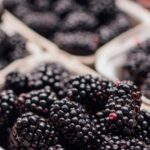What Are the Best Plants for Attracting Bees
Bees play a crucial role in our ecosystem, aiding in the pollination of flowers, fruits, and vegetables. Their populations have been declining in recent years, making it increasingly important to create environments that support their health and well-being. One of the most effective ways to attract bees to your garden is by planting the right flowers. In this article, we’ll explore some of the best plants that can draw these essential pollinators to your outdoor space.
Native Wildflowers
Native wildflowers are some of the best choices for attracting bees. These plants have evolved alongside local bee species, making them particularly appealing. Options like coneflowers, black-eyed Susans, and milkweed not only provide nectar and pollen but also thrive in the conditions of their native environments. Additionally, planting a variety of wildflowers can create a stunning display of color throughout the growing season, providing ample resources for bees.
Herbs That Buzz
Herbs are not just culinary delights; they also serve as bee magnets. Plants like lavender, rosemary, thyme, and mint produce fragrant flowers that attract a wide variety of bee species. Lavender, in particular, is renowned for its ability to draw in honeybees and bumblebees alike. When planted in clusters, these herbs can create a fragrant haven that beckons bees while also adding flavor to your kitchen.
Flowering Shrubs
Incorporating flowering shrubs into your garden can provide a significant food source for bees. Plants such as butterfly bush, azaleas, and flowering currant offer abundant blooms rich in nectar. Butterfly bush is especially favored by both honeybees and native bees, making it a popular choice. These shrubs can also provide shelter and nesting sites for bees, enhancing their appeal in your garden.
Annuals and Perennials
Mixing annuals and perennials creates an inviting environment for bees. Sunflowers, zinnias, and cosmos are vibrant annuals that thrive in sunny spots and provide a feast for bees. Perennials like asters, bee balm, and salvia are reliable sources of nectar year after year. By choosing a combination of these plants, you can ensure a continuous supply of food for bees throughout the growing season.
Pollinator-Friendly Practices
While selecting the right plants is vital, adopting pollinator-friendly gardening practices is equally important. Avoid using pesticides, which can harm bees and other beneficial insects. Instead, consider using organic methods for pest control, such as introducing beneficial insects or using natural repellents. Additionally, leaving some areas of your garden wild can provide shelter for solitary bee species, further encouraging their presence.
Plant Diversity
A diverse garden is a bee-friendly garden. Different bee species have varying preferences, so planting a wide range of flowers can cater to their diverse needs. Aim for a mix of colors, shapes, and sizes, and ensure that blooms are available at different times throughout the season. By creating a buffet of choices, you’ll attract a variety of bees and enhance the overall health of your garden.
Water Sources
While plants are essential for attracting bees, don’t forget about providing water sources. Bees need hydration, especially during hot summer months. A shallow dish filled with water and pebbles can serve as a perfect bee watering hole. This simple addition can make your garden even more inviting, creating a holistic environment that supports these vital pollinators.
Creating a Buzz in Your Garden
Attracting bees to your garden is a rewarding endeavor that benefits both the environment and your plants. By choosing the right plants and implementing bee-friendly practices, you contribute to the well-being of these essential creatures. Whether you opt for native wildflowers, fragrant herbs, or vibrant annuals, every choice you make can help create a thriving habitat for bees. Your garden can become not only a beautiful space but also a sanctuary for these important pollinators, helping to ensure their survival for generations to come.


